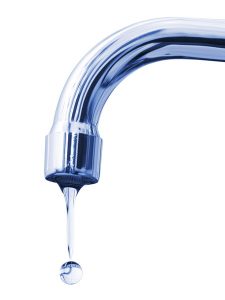 Unexpected low water pressure has to be among the most frustrating problems for a homeowner to face. After all, when the water pressure is subpar, so too is your ability to shower effectively, do your dishes, or perform any daily task that requires a pressurized stream of water. Naturally, you want to get to the bottom of your low water pressure problem. The good news is, there might be a simple fix.
Unexpected low water pressure has to be among the most frustrating problems for a homeowner to face. After all, when the water pressure is subpar, so too is your ability to shower effectively, do your dishes, or perform any daily task that requires a pressurized stream of water. Naturally, you want to get to the bottom of your low water pressure problem. The good news is, there might be a simple fix.
Keep reading to learn if your water pressure trouble is a simple repair you can do on your own, or if it’s time to call a professional Olympia plumbing repair technician. We are standing by and ready to help!
How Widespread Is the Low Water Pressure?
First, it’s important to determine whether you have a water flow issue in just one faucet, or if multiple faucets and fixtures in your home are impacted. If it’s only one faucet, then keep reading—we have your easy fix!
You may only need a pair of pliers and access to the aerator of the faucet (this is a small screen that sits at the end of the faucet). The aerator is tasked with helping control water pressure and keeping it flowing. But it can get clogged up, particularly if your home is subject to hard water.
What is hard water, you ask? This is water with a large presence of the minerals calcium and magnesium in it. These minerals are not harmful to ingest. However, they can have a negative impact on your pipes and faucets as they get stuck in the aerator and clog it up.
To solve this, you must:
- Use pliers to remove the aerator from the end of the faucet.
- Inspect the aerator for debris and rinse or tap it out.
- Reinstall the aerator.
- Turn on both the hot and cold taps to ensure the problem has been restored.
What if the Problem is Widespread?
So, what if the low water pressure persists throughout your entire home? Well, then you have a more serious problem on your hands. This means your main water line is in trouble, and it’s time to call in a plumbing pro.
In some cases, it ends up that the main water shut-off valve was slightly closed off, or that the pressure-reducing valve needs adjustment. Other times, however, the problem is more serious. For instance, the pipes may be too clogged up with those minerals we mentioned above, which will require a good drain cleaning, probably hydro-jetting.
Another issue could be there’s a leak deep down in the system, or even that there’s a problem with the municipal water supply. If the latter occurs there’s not a whole lot you can do about it in the short term, but in the absence of a citywide problem, it’s definitely worth a call to a plumbing pro!
Check for a Leak
While you may not be able to accurately pinpoint exactly where a plumbing leak has occurred, you can check to see if you have a leak, if you suspect this to be the cause of your low water pressure. Turn off your taps throughout the house, and make sure no plumbing fixtures are on.
Once you’ve done that, check your water meter and write down the reading. 30 minutes later, check again. If it’s changed, then you almost certainly have a leak, and it’s time to call in our plumbers.
Contact Brooks Plumbing Co. today for quality plumbing services.







